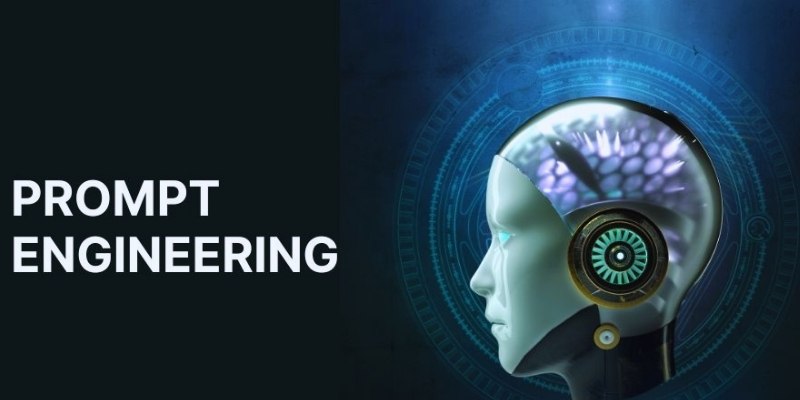Parallel processing makes effective engineering possible. It enables several chores to run concurrently, which increases speed and efficiency in artificial intelligence contacts. One effective tool for applying this approach is the Skeleton-of-Thought methodology. It enables one to divide difficult prompts into more doable chunks, guaranteeing improved AI replies. Parallel processing allows artificial intelligence to produce several answers concurrently.
Faster and more ordered results help developers and artificial intelligence users. One should grasp how this approach operates. It enables the best optimization of AI prompts for several uses. This article investigates how prompt engineering is improved by parallel processing. It clarifies the benefits of the Skeleton-of- Thought approach. You will discover how it enhances material produced by artificial intelligence.

Understanding Parallel Processing
Parallel processing is the capacity for simultaneous multiple computations. In artificial intelligence, this entails dissecting a job into smaller components. Rather than one after the other, these elements are handled simultaneously. It improves efficiency and hastens AI replies. Most artificial intelligence models depend on exacting, sequential processing. Response creation can thus be slowed down. However, parallel processing lets one compute simultaneously. It lets artificial intelligence examine several data points at once.
The model thus generates well-organized replies faster. AI can split text, for instance, into several chunks. Every section is handled individually. The findings are then aggregated into a last reply. It increases the responsiveness and efficiency of the artificial intelligence. In computer and machine learning, parallel processing is rather common. Optimizing AI performance depends on this fundamental instrument. This approach is really helpful in rapid engineering.
What Is the Skeleton-of-Thought Technique?
One method for organizing responses is the skeleton-of-thought approach. It breaks up difficult chores into sensible, smaller steps. AI then runs these procedures concurrently, raising response accuracy and quality. Human thought informs this approach. We divide difficulties into smaller pieces when we work on them. We examine every component individually and then aggregate the findings. With this approach, artificial intelligence proceeds similarly. Simultaneously, managing several aspects improves coherence and accuracy.
For a difficult topic, artificial intelligence breaks it up into subquestions. Every sub-question is handled separately. The artificial intelligence then combines the answers into a coherent response. It guarantees clarity and helps prevent illogical or insufficient answers. In long-form text production, the Skeleton-of-Thought approach proves quite helpful. It enables artificial intelligence to generate ordered, thorough material rather than nebulous responses.
How Parallel Processing Improves AI Responses
Parallel processing improves artificial intelligence answers in several respects. Text production increases speed, correctness, inventiveness, and general efficiency. Simultaneously managing several chores allows artificial intelligence to produce more ordered and pertinent responses.
- Faster Processing: Unlike addressing them individually, artificial intelligence can produce several concurrent answers, significantly shortening user waiting times. Every step in conventional sequential processing relies on the one before, reducing responsiveness. Parallel processing removes this latency, improving artificial intelligence's responsiveness and efficiency.
- Better Accuracy: Dividing prompts into smaller pieces lets AI concentrate on each. This focused strategy guarantees that the reaction is meticulously handled everywhere. AI thus generates more accurate and pertinent responses than general ones.
- Improved Creativity: AI can investigate many facets of a subject concurrently, resulting in more different and interesting answers. It can also present several points of view instead of a single direct response, augmenting the material's depth.
- Reduced Errors: Parallel computing lets artificial intelligence generate text by cross-checking several parts. It reduces errors and responses with discrepancies. AI enhances general response quality through component analysis taken at several levels.
- More Detailed Responses: AI can create richer, more well-organized information than it can offer brief, evasive responses. Parallel processing results in more complete answers, ensuring that every question element is sufficiently addressed.

Practical Applications of Parallel Processing in AI
Applications of artificial intelligence extensively take advantage of parallel processing. In many disciplines, it improves speed, accuracy, and efficiency. Managing several chores allows artificial intelligence to analyze data faster and raise general performance.
- Chatbots and Virtual Assistants: Chatbots driven by artificial intelligence manage several questions simultaneously using parallel processing. This lets them react right away to several users, increasing user experience and response times and smoothing interactions.
- Content Generation: Content created by artificial intelligence benefits marketers and writers. Through segmentation, parallel processing enables artificial intelligence to generate long-form text effectively. This guarantees AI keeps coherence, clarity, and structure.
- Data Analysis: Parallel processing lets artificial intelligence rapidly examine vast amounts. Faster decision-making is made possible by this, which helps business intelligence, research, trend analysis, and other areas.
- Language Translation: Artificial intelligence translation technologies concurrently handle several portions of text simultaneously. It makes faster and more accurate translations, which helps multilingual communication.
- Medical Diagnosis: AI helps examine patient records. Using parallel computing, AI can quickly suggest therapies, spot ailments, and find trends. It speeds up medical decision-making and improves diagnosis accuracy.
The Future of Parallel Processing in AI
Parallel processing's importance in artificial intelligence will keep rising. Efficiency will rise as artificial intelligence models get ever more sophisticated. Parallel approaches will be more important for the next artificial intelligence systems. It will result in even more exact results even faster. Artificial intelligence developers will hone skills, including the skeleton of the approach. It will improve the capacity of artificial intelligence to create ordered material.
Parallel processing will change along with hardware and computer power increases. AI will develop in response and adaptation ability. New models will combine this strategy for optimal performance. Users of artificial intelligence will find more flawless interactions. Parallel computing will improve AI applications, whether for regular chores or business.
Conclusion:
Improving artificial intelligence accuracy, efficiency, and originality depends critically on parallel processing. The Skeleton-of-Through method maximizes quick engineering by dissecting difficult projects into smaller, doable components. It helps artificial intelligence process several answers concurrently, enhancing coherence and speed. This method helps content creators, developers, and researchers to guarantee thorough and well-organized AI-generated materials. From medical diagnosis to chatbots, parallel processing improves AI's capacity to provide quicker and more accurate outcomes. Leveraging parallel processing will remain crucial for optimizing performance, response quality, and user experience in many applications as artificial intelligence develops.











